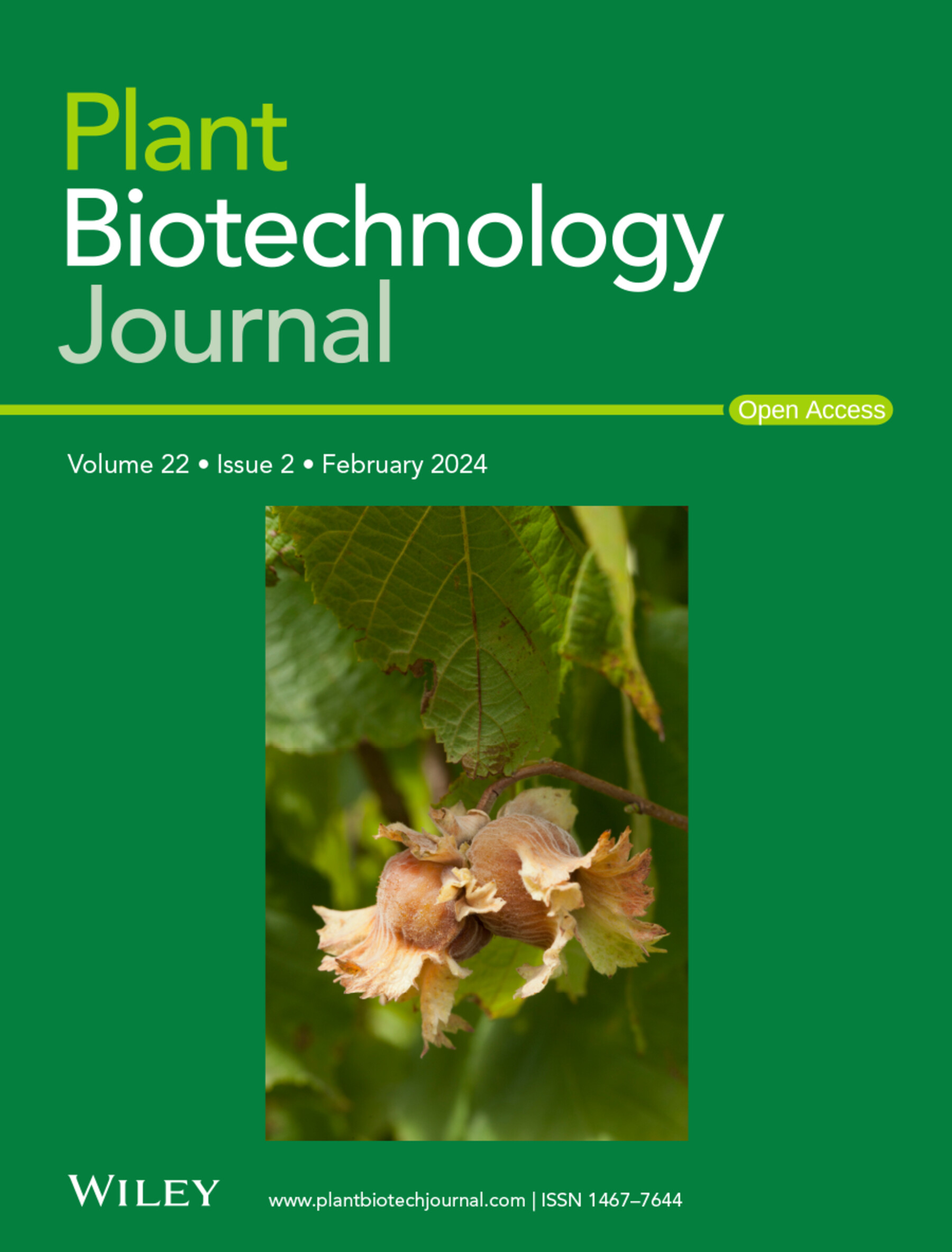IQ67-domain蛋白IQD1通过复杂的多蛋白相互作用调节辣椒(Capsicum annuum L.)的果实形状
IF 10.1
1区 生物学
Q1 BIOTECHNOLOGY & APPLIED MICROBIOLOGY
引用次数: 0
摘要
自然遗传变异可用于作物重要农艺性状的改良,了解果形自然变异的遗传基础可帮助育种者培育出符合市场需求的辣椒品种。在这项研究中,我们通过传统的遗传定位发现了一个控制果实长宽比的QTL,编码了一个以前未被发现的基因CaIQD1。在辣椒中,CaIQD1表达减少导致果实短而宽,而在番茄中,CaIQD1异源过表达导致果实窄。进一步的实验表明,CaIQD1通过影响辣椒细胞的增殖、扩增和形态变化来调控果实形状。在CaTRM‐like‐CaOFP20中,CaIQD1也与CaOFP20有直接的蛋白相互作用。CaOFP20表达减少导致辣椒果实变长、弯曲,而CaTRM样表达减少导致果实变圆。这些基因表达变化对细胞周期和细胞扩增相关基因的表达有显著影响。因此,CaTRM‐like‐CaOFP20‐CaIQD1模块可能代表了控制辣椒果实形状的保守调控途径。CaIQD1还与辣椒钙调蛋白CaCaM7、微管蛋白CaMAP70‐2和微管运动蛋白caclcr1直接相互作用,表明CaIQD1对果实形状的调节与Ca2+‐CaM介导的微管动力学变化有关。我们还发现,在其他植物物种中,CaIQD1与几个典型的调节果实形状的基因同源物相互作用。综上所述,我们的研究结果表明,CaIQD1通过与多种蛋白质的相互作用,在调节辣椒果实形状中起核心枢纽作用。本文章由计算机程序翻译,如有差异,请以英文原文为准。
The IQ67‐domain protein IQD1 regulates fruit shape through complex multiprotein interactions in pepper (Capsicum annuum L.)
SummaryNatural genetic variation can be used to improve important crop agronomic traits, and understanding the genetic basis of natural variation in fruit shape can help breeders develop pepper varieties that meet market demand. In this study, we identified a QTL controlling fruit length–width ratio by conventional genetic mapping, encoding a previously uncharacterized gene CaIQD1 . Reduced CaIQD1 expression resulted in short and wide fruits in pepper, whereas heterologous overexpression of CaIQD1 resulted in narrower fruits in tomato. Further experiments suggested that CaIQD1 regulates fruit shape in pepper by affecting cell proliferation, expansion and morphological changes. CaIQD1 also has a direct protein interaction with CaOFP20 in CaTRM‐like‐CaOFP20. Reduced CaOFP20 expression caused pepper fruits to become elongated and curved, whereas reduced CaTRM‐like expression led to the formation of rounder fruits. These gene expression changes had a significant effect on the expression of genes related to the cell cycle and cell expansion. The CaTRM‐like‐CaOFP20‐CaIQD1 module may thus represent a conserved regulatory pathway for controlling pepper fruit shape. CaIQD1 also showed direct interactions with the pepper calmodulin CaCaM7, the tubulin CaMAP70‐2 and the microtubule motor protein CaKLCR1, suggesting that the regulation of fruit shape by CaIQD1 is related to changes in microtubule dynamics mediated by Ca2+ ‐CaM. We also found that CaIQD1 interacts with several homologues of genes that typically regulate fruit shape in other plant species. In summary, our results show that CaIQD1 acts as a core hub in regulating pepper fruit shape through interactions with multiple proteins.
求助全文
通过发布文献求助,成功后即可免费获取论文全文。
去求助
来源期刊

Plant Biotechnology Journal
生物-生物工程与应用微生物
CiteScore
20.50
自引率
2.90%
发文量
201
审稿时长
1 months
期刊介绍:
Plant Biotechnology Journal aspires to publish original research and insightful reviews of high impact, authored by prominent researchers in applied plant science. The journal places a special emphasis on molecular plant sciences and their practical applications through plant biotechnology. Our goal is to establish a platform for showcasing significant advances in the field, encompassing curiosity-driven studies with potential applications, strategic research in plant biotechnology, scientific analysis of crucial issues for the beneficial utilization of plant sciences, and assessments of the performance of plant biotechnology products in practical applications.
 求助内容:
求助内容: 应助结果提醒方式:
应助结果提醒方式:


